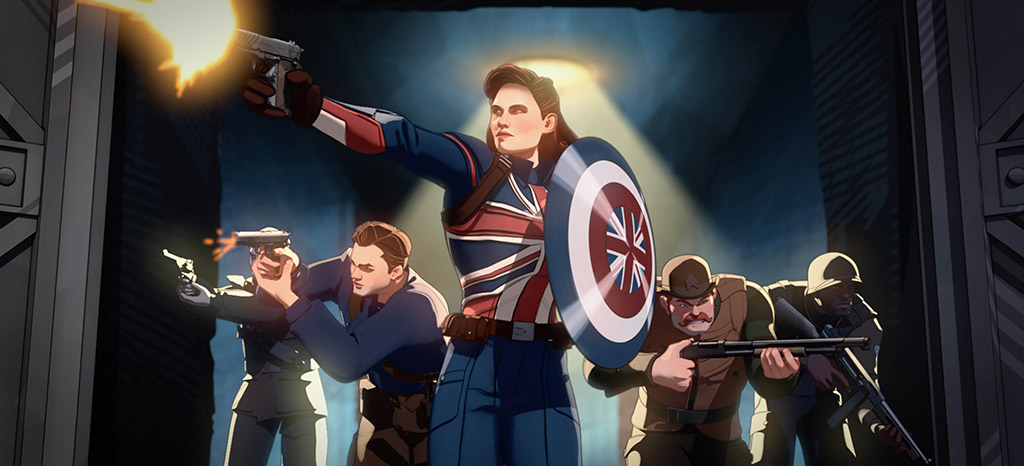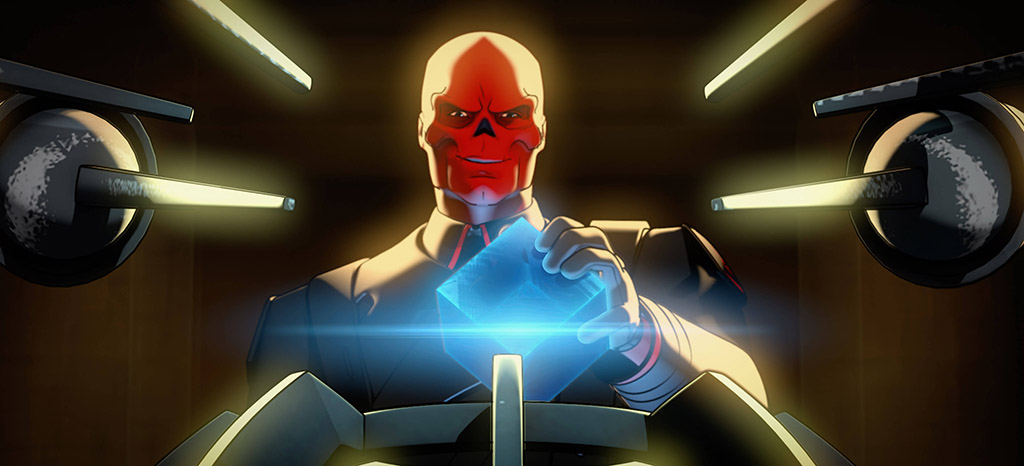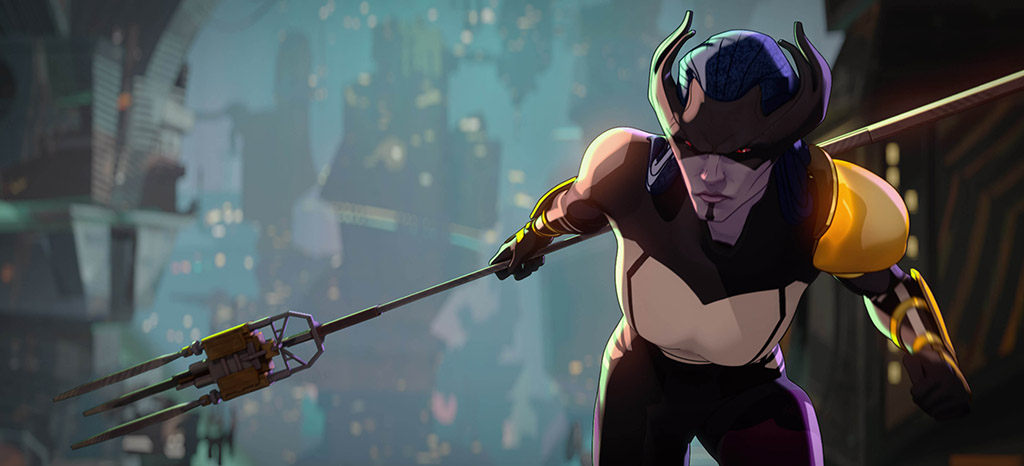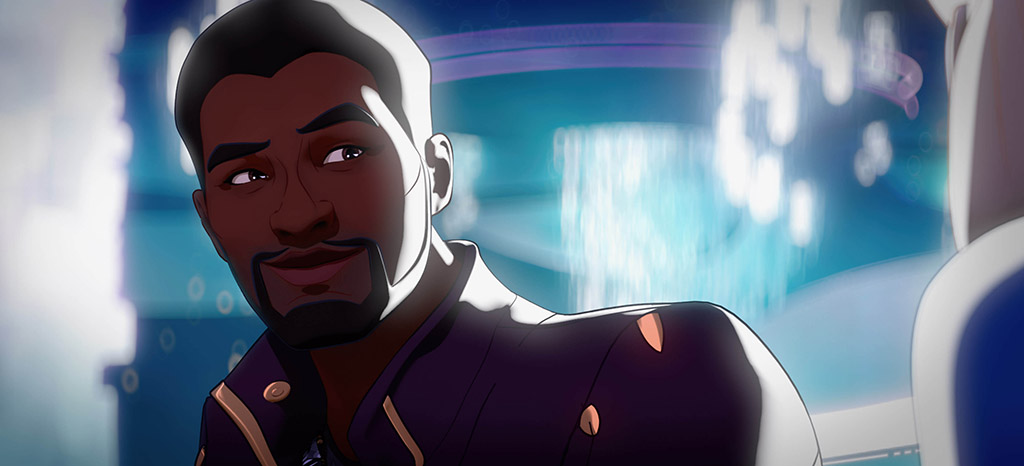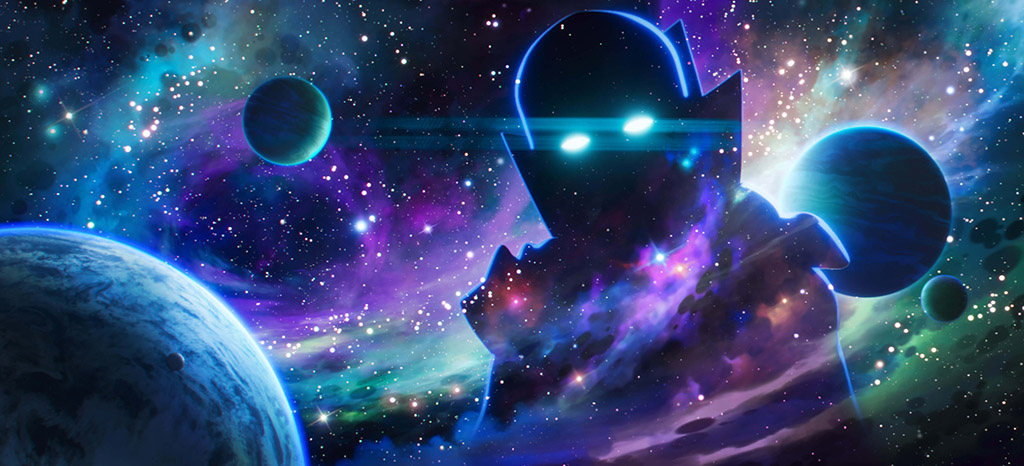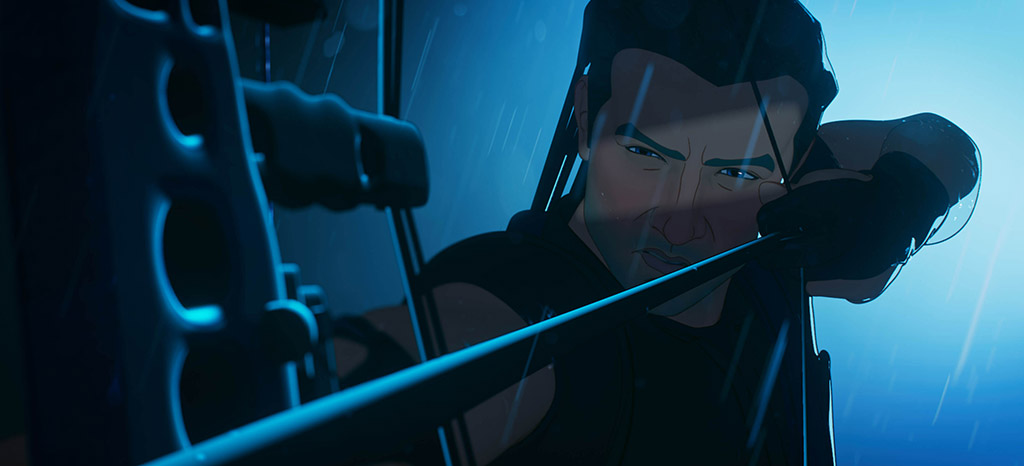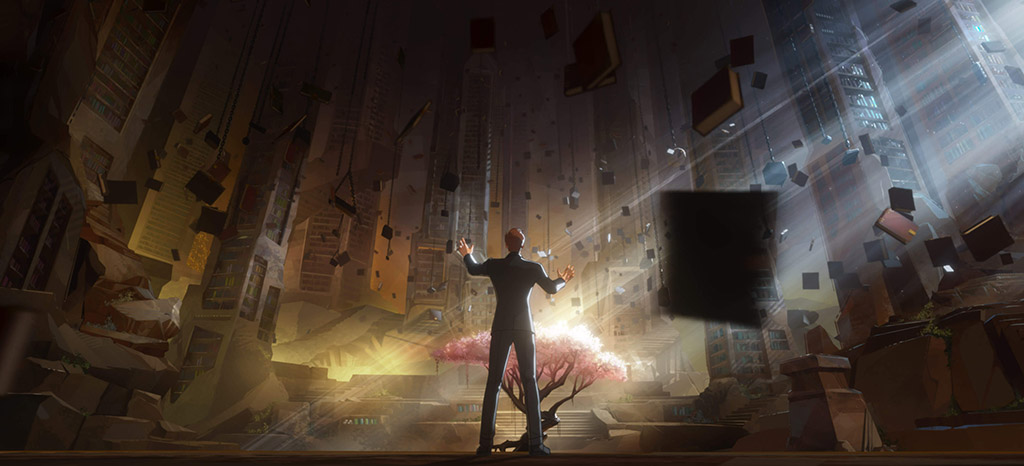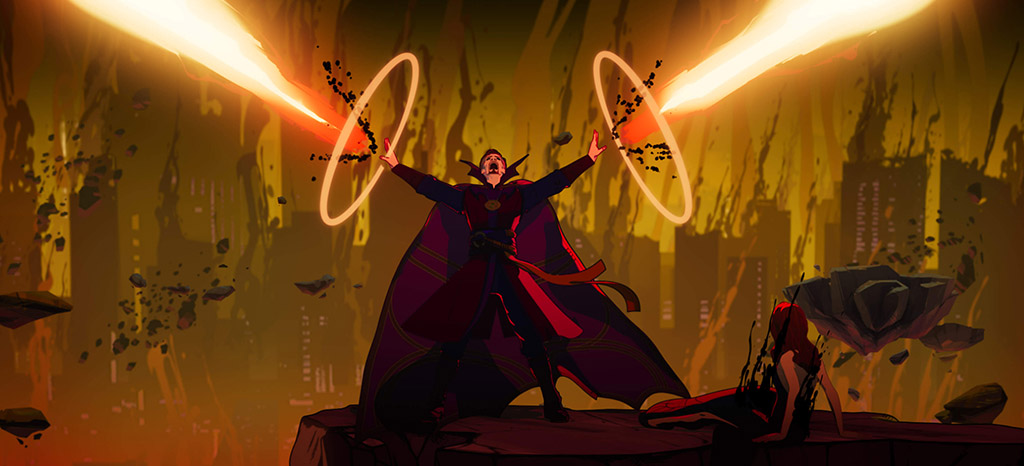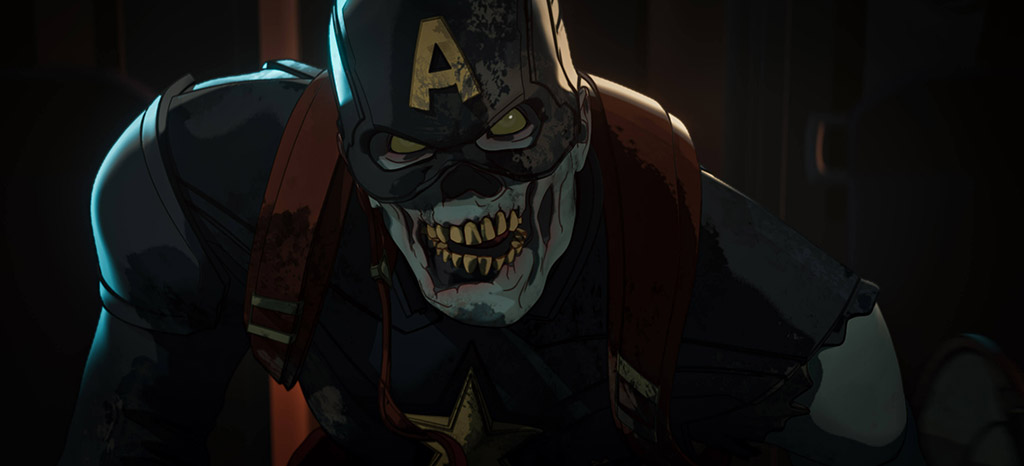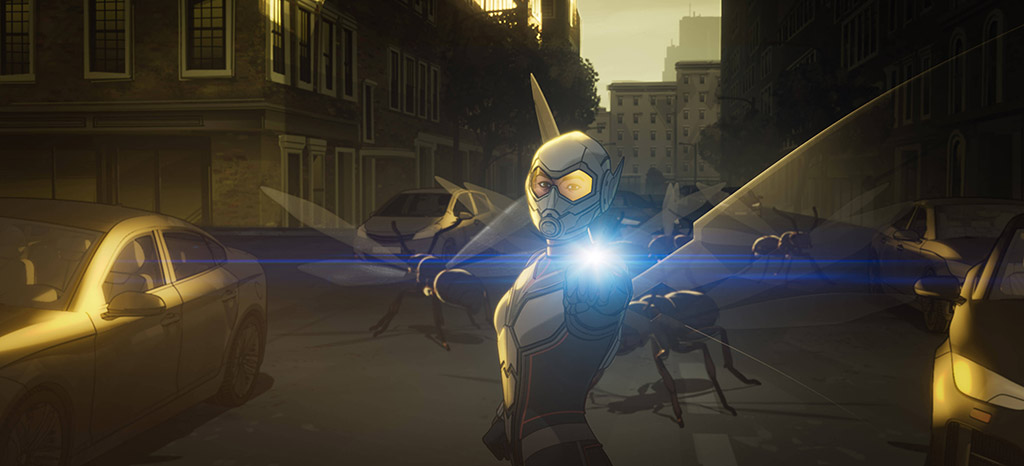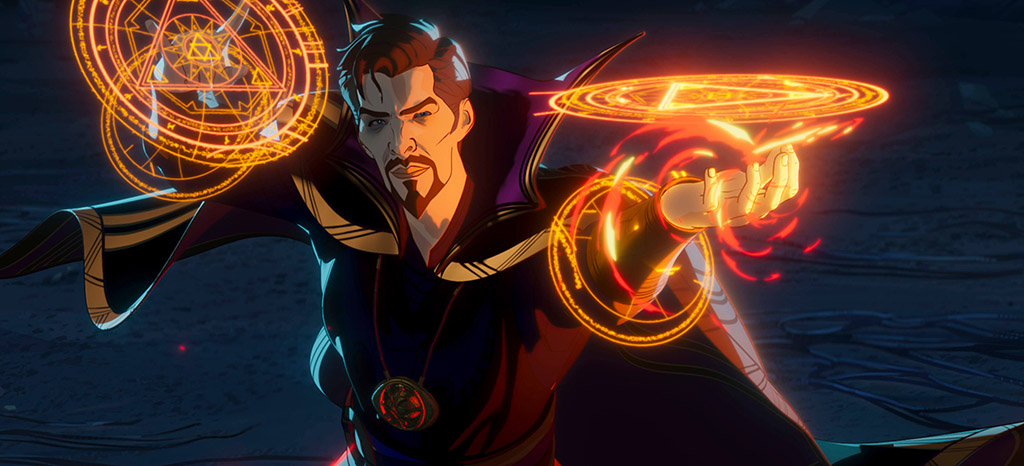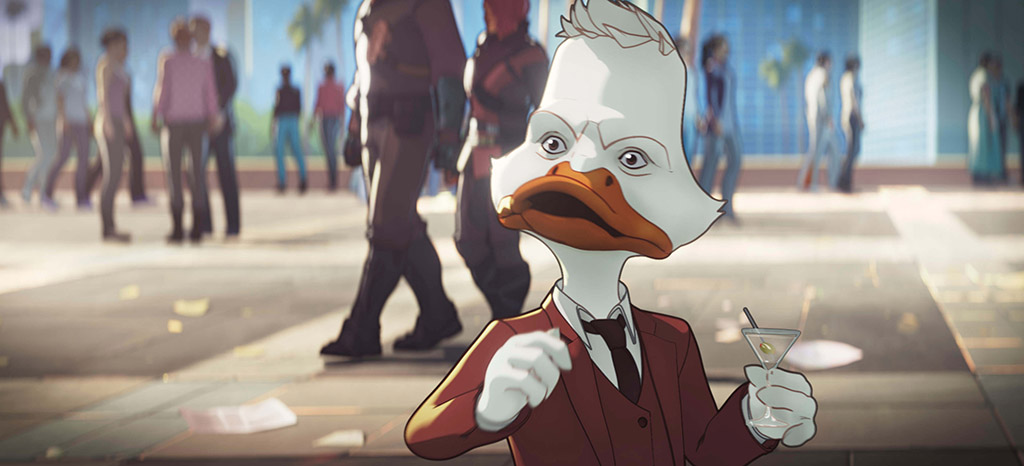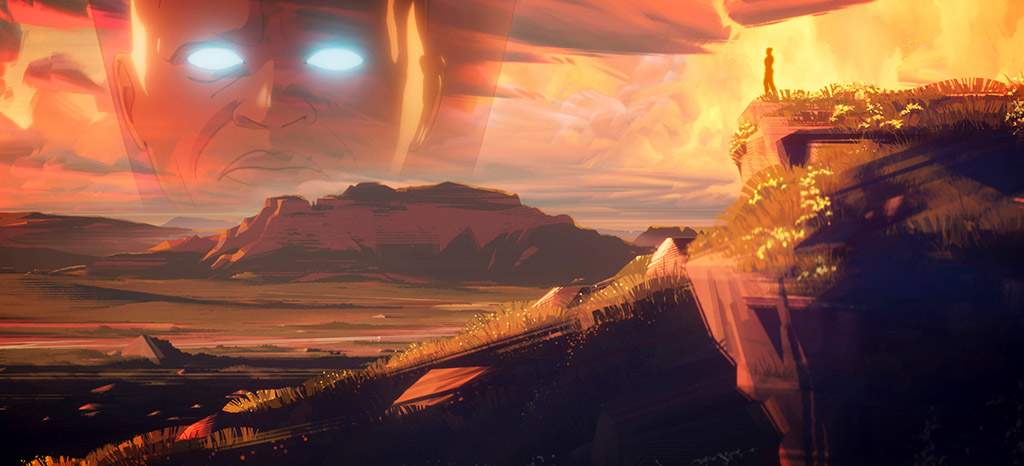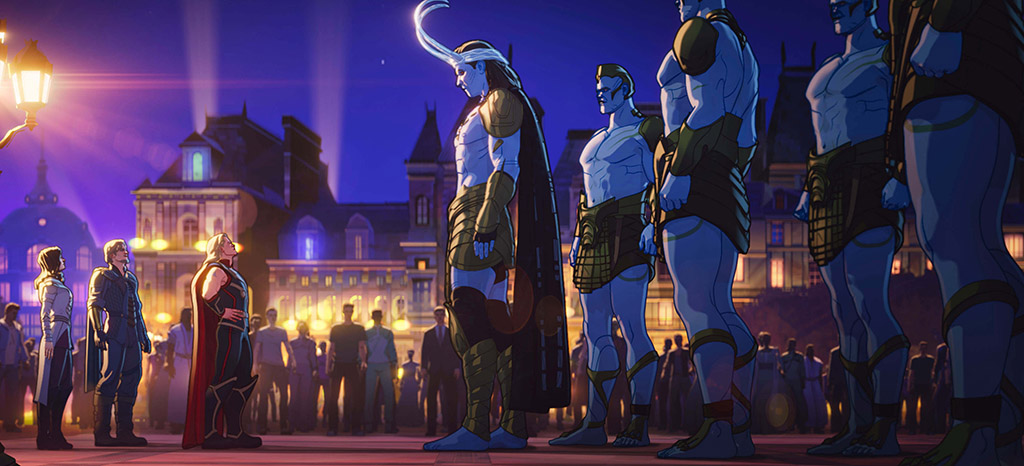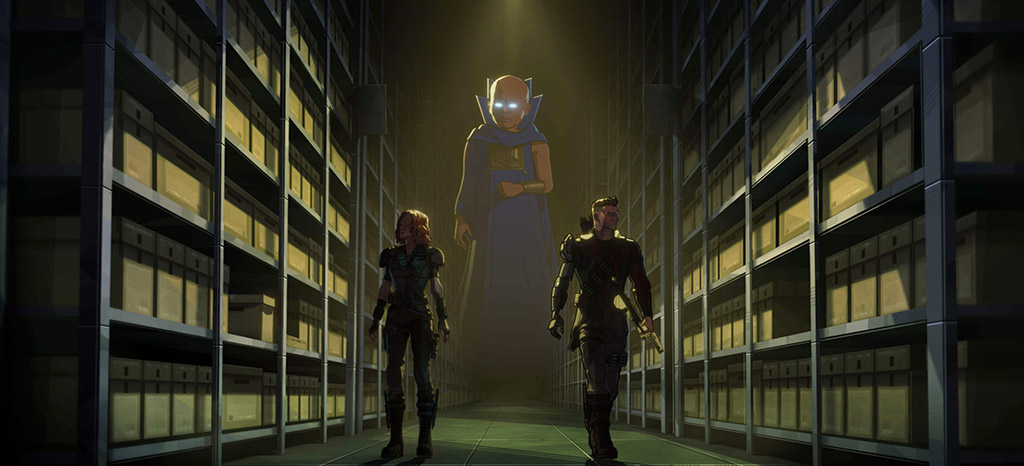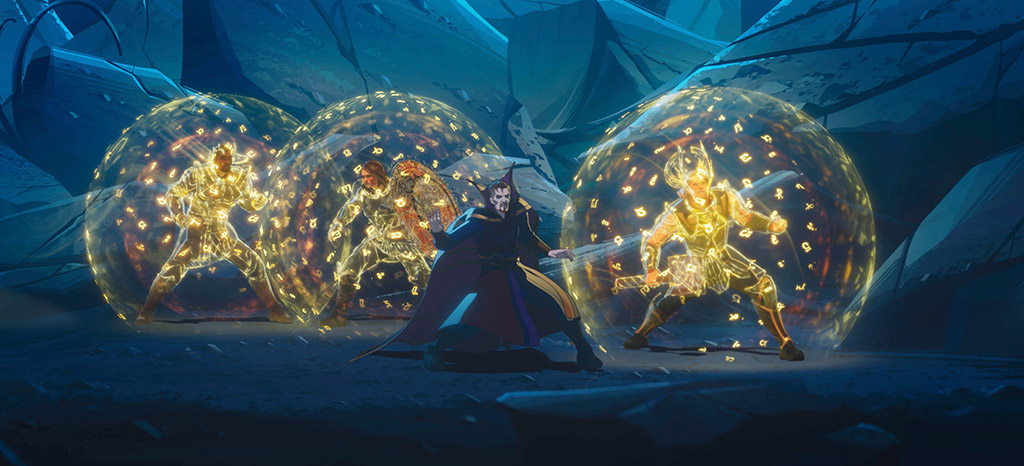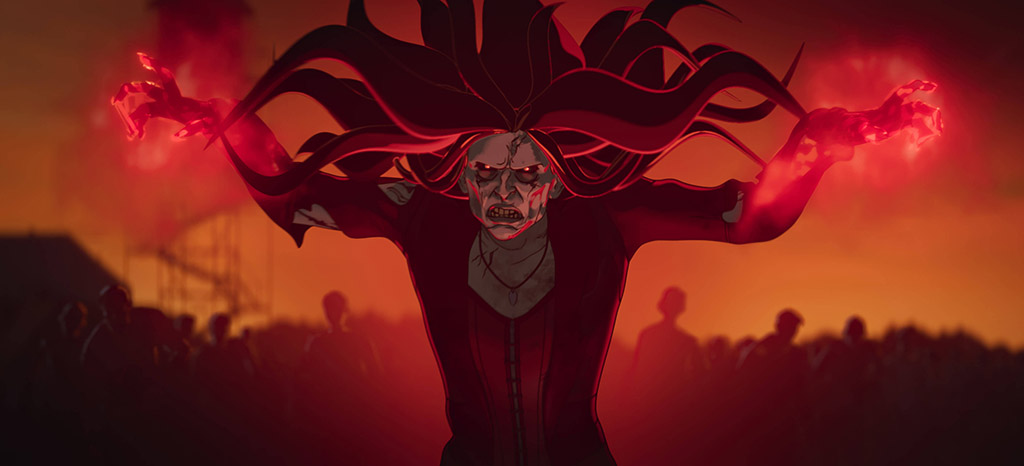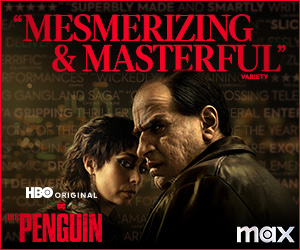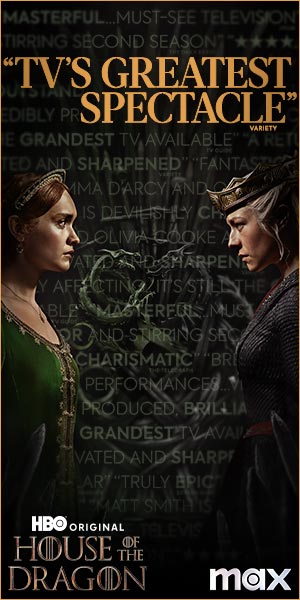Character designs were revised to various degrees to better translate into animation. “The more a character is called upon to do physical, unique, bespoke things you have to work extra hard in creating the animated version so you can do justice to all of those things,” notes Franck. “If you watch Episode 101, Peggy Carter does so much. You see her from every angle possible, like in the montage. We had to make her work in all of those situations.” A certain aspect was critical for success. “We have great character designs and a great way to animate them, but then you still need to create a performance,” emphasizes Franck. “Those performances are multidimensional. What’s fun in the MCU movies in general is that these characters have a bigger-than-life quality to them, so much so that you feel like you’re watching a Jack Kirby drawing coming to life. But, also, those characters are human, and you can feel their personalities and how specific traits are dialed in. We leaned on everything that we had in animation to make the fights and action as exciting as you’re expecting, but also capture the vide of specific characters as we’re putting them through new situations that let you explore them in ways that you’ve never seen before and lets you discover what is under the hood of their personalities even more.”


